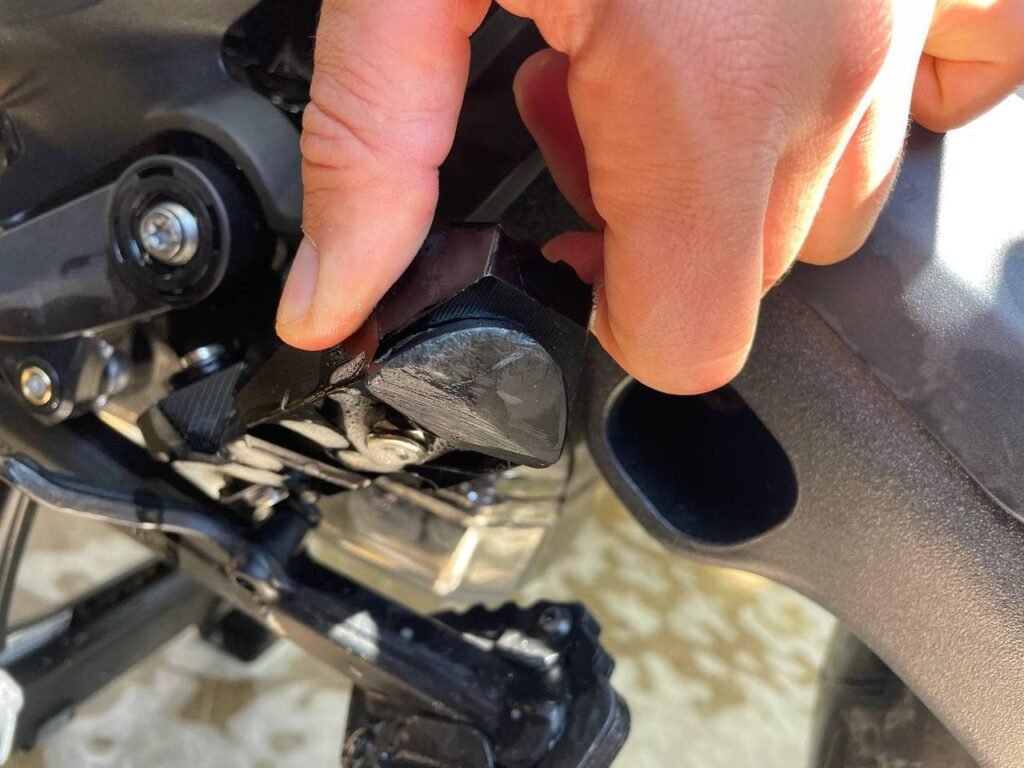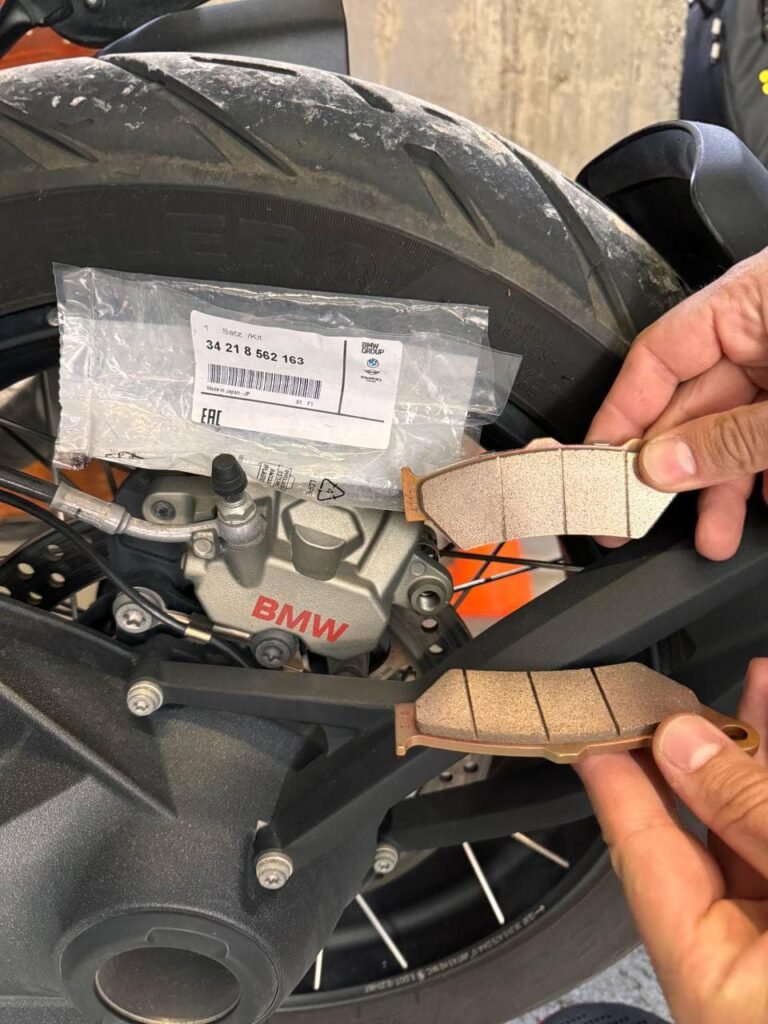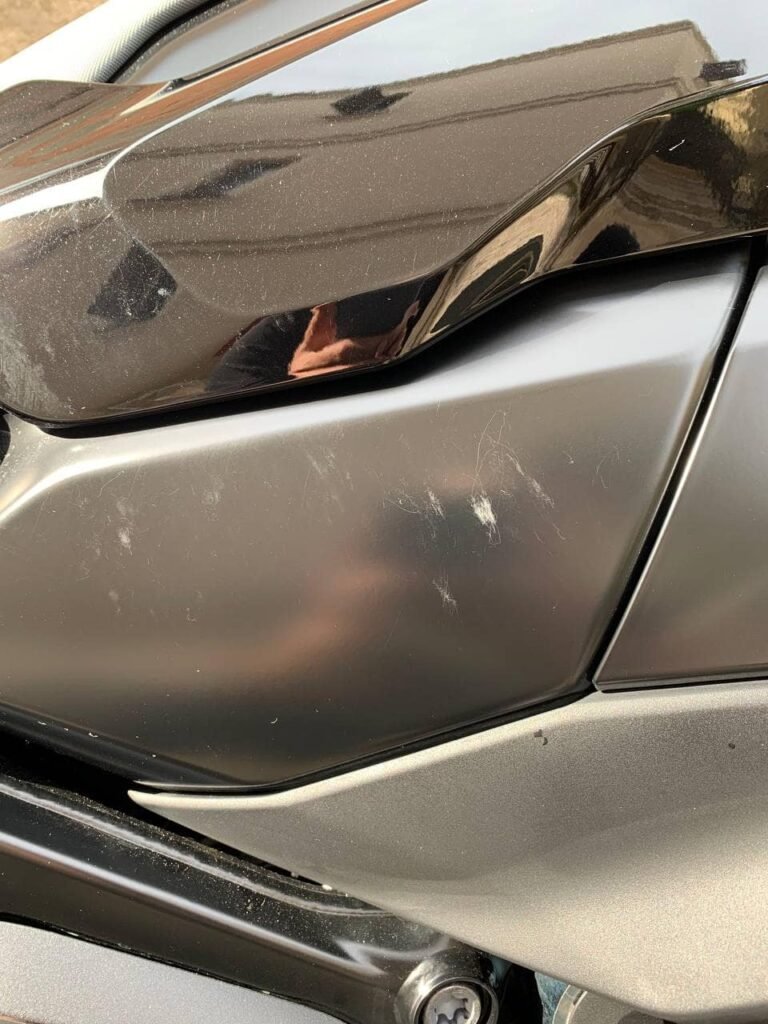The mileage on both of our slim 1300GSs exceeded 30,000km in the past season. This is to summarize the experience and come up with some conclusions. Our motorcycles are being utilized in a rental fleet, therefore I can’t know exactly which conditions they have been used in, but generally it could be concluded that they have been ridden as average bikes by normal riders. My observations therefore could be deemed as average indication with no connection to a particular rider. It would be fair to admit that there’s few highways and no big cities in our area. The majority riding is associated with serpentines, suburban areas, asphalt of different quality, and sometimes rocky/gravel tracks. The rental fleet also has a number of BMW 1250s, including 4 standard GSs, and 2 GSAs of the latest editions. Speaking about 1300GS, I personally put just under 10,000km on it this year.
At present, the motorcycles have gone through all recalls and software updates.
Speaking broadly, I still love this motorcycle. In the past I used to have doubts when choosing 1 motorcycle out of 20 to ride on a particular day, but now I don’t have such a problem. Though, it would be fair enough to say that the new 1300GSA with automated transmission was able to challenge my confidence. But that is rather due to the fact that different motorcycles have different purposes, and are being used accordingly. There’s also a sort of hidden meaning, and things may get changed by the end of the text 🙂
Some side effects showed up: the 1250 suddenly appeared to have insufficient engine in my view. I started to notice myself going full throttle quite frequently. The breaks no longer feel adequate. On the 1300 the engine and steering received substantial improvements, whereas the breaks – not that much. The two-circuit brake system is a bit annoying. The lever now has a floating behavior, whereby the increasing resilience may be followed by rapid downstroke, which becomes especially noticeable when the front brake is applied several times in a sequence. The rear pads require replacement every 10,000km, whereas on the previous models they easily did 20,000km. Shape-wise the pads are the same as the ones used at 1250, but have different compounds, and the dealer refuses to put the old ones on 1300, as the manual dictates them not to do so. They preferred to let me ride with worn out pads to installation of 1250 pads. So I had to do it myself. There is a feeling that the bike now allocates more breaking force to the rear wheel than its ancestors did before. Sometimes the rear wheel starts to get blocked earlier than you would expect based on the experience with the previous models. The feedback went south. The front pads life also saw a reduction from 30 to 20,000km compared to the previous 1250GS.
The early impressions regarding the comfort got confirmed: an average rider prefers 1250 in that respect. A 50-year old motorcycle guide came to visit me. His major motorcycle is 1250GSA. At first, he took a 1300GS, but by the end of the day requested a swap to 1250GSA, and was happy to find himself back on a comfortable couch. But I noticed that he began to ride more slowly compared to 1300. Our average speed dropped noticeably, especially on serpentines. The 1300 is likely to have a more aggressive rider position, that won’t fit everyone. But almost every rider would naturally go faster as a result. Very few complaints got received from the clients though.
Both the quick shifter and the gearbox started to work properly by 10,000km. A software update happened during this period as well. The gear changing process became more comfortable. Lever and pegs change out (both forced and intentional) also contributed to the improved feeling. The Triple Black bike was supplied with narrow, rubber, uncomfortable peds like they used to put on the old 750/850 series. The gear shift lever was made of plastic that got broken as a result of a slight kick by foot in east-west direction.
The other bike with Enduro Package had adjustable pegs made of metal. Not sure if this feature relates to GS-trophy package.
With the latest software update (fall 2024) the quick shifter became noticeably better. Maybe not outstanding but very good. Even compared to the 1300 GSA “automatic” the gear clicks don’t seem to be felt on the lever that much. The shifts from 1 to 2 and back to 1 are still not ideal, but from 2 to 3 the quick shifter may be used and the feedback from the gearbox feels better than in case of automatic version, which is a plus.
The luggage cases remain a bit of a problem, not to say a complete fail. But this made me buy a proper aftermarket solution rather than the nice and shiny OEM cases with extremely limited capacity and constantly self-opening covers that must be additionally “strapped-on” your bike according to the BMW manual.
There were two recalls on the starter’s relay. The insufficient water resistance led to malfunctioning. They replaced it on nearly every bike from generation 1, whereas in autumn a second recall was announced to replace whatever was replaced before.
And the epic fail regarding the 1300GS happened during the summer: the ignition switch quit working. The whole right control block is not water resistant. But it used to be like that with the 1250 (the controls appeared to be interchangeable, which made us fix the problem quickly). In the case of 1250 that upper button was responsible for heating, which used to work OK without corrosion even being flooded. On the 1300 they connected the ignition switch function to it, which is being heavily used, which results in quicker conductors oxidation, and the whole electric system of the bike gets disconnected. There were loads of reports when the bikes showed no signs of life after the rain. One report seemed to say that the bike started to crank on its own and never stopped until the whole machine went on fire.
We also faced this problem and had to go and provide technical assistance to a client that got stuck in a neighboring country. Luckily, the information on the issue was already available and the spare inner buttons were something that we purchased in advance. Later on, we disassembled the controls and used silicone glue around the upper button. The problem never showed up again. A recall for buttons is underway – we made a claim, but yet didn’t have a chance to receive new buttons and review the changes made to the inner design.
Like I said before, the fall brought another software update, and apart from the quick shifter, the dashboard received new features. The list of riding modes now consists of 5 instead of 4. It’s very useful to have another riding mode in addition to the well-known “rain”, “road”, “dynamic” and “enduro” (you don’t think that I imply Eco do you?).
Another change brought by the software update is about the logic of the suspension damping. In the past, the suspension behavior used to change as you choose the riding modes e.g. the “dynamic” mode was associated with more stiff suspension damping. Now it just remains the way you set in last time. I believe this is due to the automated transmission: change the gear-shifting behavior quickly without touching the suspension. I don’t quite like it. I prefer when the behavior changes completely – dynamic must be dynamic in all meanings.
The turn signals in the hand guards appeared to be a good solution. They are solid and don’t break immediately when the bike falls down or slides. That was my major concern. The OEM crash bars are well-made and sufficient for asphalt slides (I had the pleasure to start sliding at 60 km/h myself). The difference is that the 1250 used to slide without touching the higher bars (unless you did it with flip-over the rocks), whereas the 1300 is likely to damage the upper parts of the bike if there are no upper guards.
The most unpleasant part is that both bikes consume oil. We did break-in thoroughly for both of them, and can be sure that the engines were treated properly in the most sensitive part of their life. The problem became noticeable on both bikes after 20,000km. Luckily, we never found ourselves in a situation whereby a warning would pop up on the dash, but rather managed to catch the low level as part of the periodic inspection. Between 20 and 30,000km, one bike consumes just above 1L, and the other – just under 1L of oil. This is not something that falls into the warranty case, but requires detailed attention from our side.
The clutch discs got overheated on one of the bikes. The motorcycle doesn’t seem to have been utilized on the off-road, but I can’t track every ride done by the clients. The tires have always been 90/10, which shouldn’t inspire anyone for off-road adventures. By the end of the season, we noticed a slight rustle and shaking when taking off right after the catalytic neutralizer warm-up on a cold engine. The problem used to disappear shortly after, and didn’t come back on high speeds. After the end of the season, the bike was disassembled (which included some lead time until a special tool for cover salvaging arrived on the dealer’s site) and indicated blue spots on the clutch discs. Taking into account the non-dry nature of the clutch design, one of the clients must have done something improperly (once I observed someone revving a GS like a chainsaw every time before take off), and it’s hard to blame the bike. Though, it should be noted that we never saw such a problem on the older 1250GSs. Also, I have seen a video with similar symptoms on the internet, and the problem may be slightly bigger than I imagined before.
Generally, the issues of the fresh model’s first year are in place, but I wouldn’t call them neither critical nor irrelevant. Not sure what it’s going to end up with – hopefully the 5-year warranty saves us from big surprises. The bike appeared to be good, but not for all types of riders.
Meanwhile, we put into operation a new 1300GSA with clutch assist. Come to visit us in Montenegro and schedule a test-ride or/and a comparison test.












